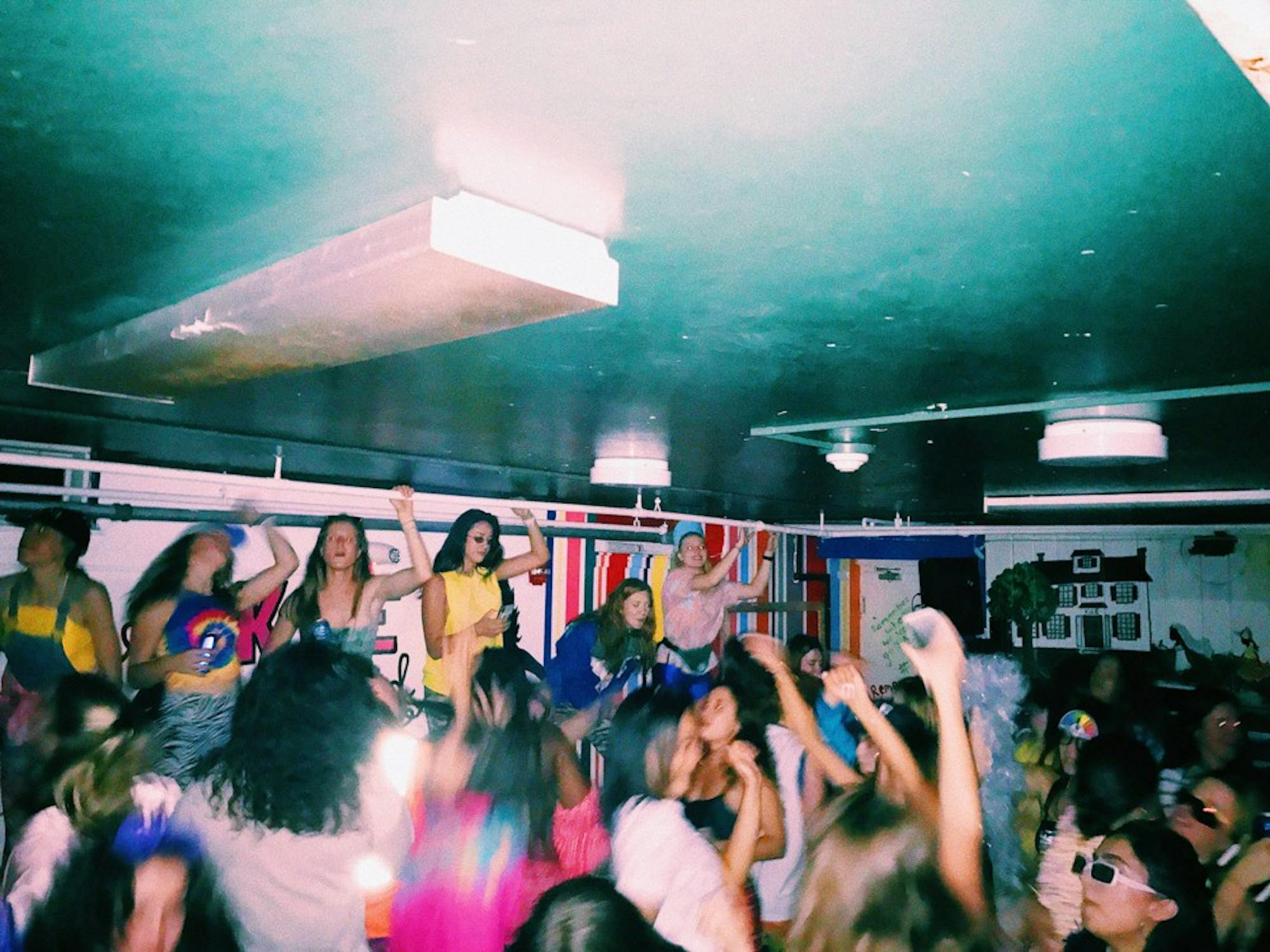When Dartmouth students try to articulate why the College is special, flair is frequently cited as a uniquely Dartmouth phenomenon and for good reason. Although the origins of the term “flair” cannot be identified, a 2008 article published in The Dartmouth said that it may have been derived from the 1999 movie “Office Space” with Jennifer Aniston . In the film, Aniston’s character must wear expressive pins for her job as a waitress.
“People can get a cheeseburger anywhere, okay?” Aniston’s fictional manager tells her character. “They come to Chotchkie’s for the fun atmosphere and the attitude. Okay? That’s what the flair’s about. It’s about fun.”
While the culture of flair does not force students to wear costumes in the same way that Aniston is required to wear her pins, the restaurant manager in “Office Space” was onto something: Flair is about fun.
This simple act of donning a costume for a non-Halloween event has become a pervasive aspect of the College’s culture.
Much of what makes the College unique is intangible, according to Talia Lorch ’19; however, flair is a perceptible practice that students can identify as an individual aspect of Dartmouth that emphasizes the “laid back atmosphere.”
Despite the ubiquity of flair on campus today, it did not exist until relatively recently in the College’s 250-year history. The concept of flair was not mentioned in The Dartmouth until 2008. In November 2008, the Mirror section of The Dartmouth released an issue entitled “Flair 101.”
The earliest traces of flair come from the Dartmouth Outing Club: costumes became a part of First Year Trips with Lodj Croo in the 1960s, and H Croo followed suit in the 1980s. While the role of flair grew over time, it still did not play a major role at the College in the early 2000s, according to John Velosky ’02. While he remembers that DOC members would sometimes wear flair in his time at Dartmouth, he said that flair was not a part of the “general campus.”
Jordan Rose ‘09 said that he does not recall the term “flair” being used at all during his time at Dartmouth.
“This is the first I’m hearing about flair at Dartmouth,” he said “When you said flair, my brain immediately went to the movie ‘Office Space.’”
But Rose, who was a DOC Trip Leader at the college, said he does remember wearing costumes and going to events that are now considered “flair” themed.
“I certainly remember as a trippee and a Trip Leader, wearing silly costumes and going all out, and I do remember Tackiez and other social events in that regard, but the term flair escapes me,” he said.
Students’ exposure to flair begins even before their matriculation at the College. During Dimensions each spring, prospective students watch current freshmen perform in the Dimensions show wearing green and white flair and subsequently go on After Dark Tours led by tour guides also adorned in flair .
Flair awaits the new class again during Trips, when new students arrive to campus each fall. On the first day of Trips, incoming freshmen are greeted by H Croo wearing flair, singing songs with rewritten Dartmouth-specific lyrics and dancing choreographed routines on the lawn of Robinson Hall. According to Julia Huebner ’20, H Croo leader for this year’s upcoming First Year Trips, flair helps set the tone for Trips by making upperclassmen leaders seem “less intimidating” and by “break[ing] down fear and anxiety” for freshmen beginning their Trips experience.
“I hope that it brings a level of delight and a level of silliness that makes people feel more at home and a little bit less nervous when they start their first experience [at the College],” Huebner said.
“[Flair on Trips] connotes that Dartmouth students don’t have to take themselves seriously to do the jobs that they do,” Huebner said.
According to Rose, wearing flair adds “levity to the situation” and allows students to “express themselves.”
Flair on Trips also has practical purposes. According to Huebner, flair serves to help freshmen identify who the upperclassmen working for Trips are and who the other members of their class are.
Many students choose to participate in Trips as volunteers, thus entering the flair-wearing ranks that they once saw as incoming freshmen. For them, flair takes on a new role. According to Huebner, flair becomes a “shared tradition” for H Croo members and other trips volunteers that brings them together as a community.
After students officially enter the College and begin classes, flair continues to play a role in their experiences. Members of clubs, Greek houses, a cappella groups and other performance groups regularly don flair for social events, performances and other activities.
In addition, many student groups use the College’s love of flair for unconventional purposes. For example, Dartmouth’s chapter of Colleges Against Cancer hosts an annual flair sale as a fundraiser supporting the American Cancer Society every fall . Colleges Against Cancer president Talia Lorch ’20 said that the wackier items at the sale tend to be more popular than the tamer ones.
“The crazier it is, the better it does,” Lorch said. “People like things that are ridiculous.”
Giving an example of a popular item, Lorch cited a hamburger-shaped hat from this year’s sale.
Although its official name may be relatively new, Rose said flair definitely made an impression during his undergraduate years at Dartmouth.
“[I remember] being a freshman, sitting around on the Green or watching the [Trips’] safety talk, and all of a sudden these crazy people in crazy costumes show up,” Rose said. “That [moment] left a positive mark — it’s something I fondly remember.”


